



Southwestern Road Trip Pit Stop Shop
Colorado
Pit Stop Attraction
Royal Gorge Bridge & Park in Canon City, Colorado is a short drive west of Pueblo, Colorado. Home to America’s highest suspension bridge and zip line, Royal Gorge Bridge hangs nearly a thousand feet above the Arkansas River. The park has turned itself into a bona fide Western attraction, featuring rock climbing, zip lining, a sky coaster, gondola rides and more.
If that piqued your interest, you can take a second detour right near El Pueblo Lodge and view the Taos Gorge Bridge. The second highest bridge on the US Highway System and fifth highest bridge in the country is a sight to behold, especially at sunset.
New Mexico
Pit Stop Attraction
Meow Wolf in Santa Fe is one of the most unique art experiences in the world. Over 70 rooms of immersive art, Santa Fe is the phenomenon’s original location, donning the theme House of Eternal Return. The description “mind-bending” doesn’t do this experience justice.
If you’re traveling the Southwest in search of art, Taos is a destination in and of itself. Taos claims over 70 active art galleries and several museums displaying works from both local artists and pieces from around the globe.
Texas
Pit Stop Attraction
Tee Pee Curios in Tucumcari, New Mexico is the last remaining original Route 66 curio shop in the state. What was a gas and grocery store back when the iconic Route 66 was only a two-lane highway, Tee Pee Curios is keeping classic Americana alive in eastern New Mexico.
If you like grabbing a memento at each stop you make to mark your journey, Tee Pee Curios is exactly the place. Downtown and Taos Plaza has more boutiques than you’d know what to do with, making the search for memorable local crafts an exciting challenge.
Arizona
Pit Stop Attraction
Meteor Crater in Winslow, Arizona has been called the “world’s best preserved meteorite impact site.” One of the West’s most unexpectedly intriguing natural sites, Meteor Crater is nearly a mile in diameter and more than 550 feet deep. Determined to have collided with Earth approximately 50,000 years ago, Meteor Crater is still blowing the minds of roadtrippers throughout the Southwest.
If you enjoy gawking at the wonders from a time far before you were born, Taos is a sanctuary for history. While not an astrological event, Taos Pueblo is one of our most visited attractions because of its nearly unfathomable impressiveness and age.
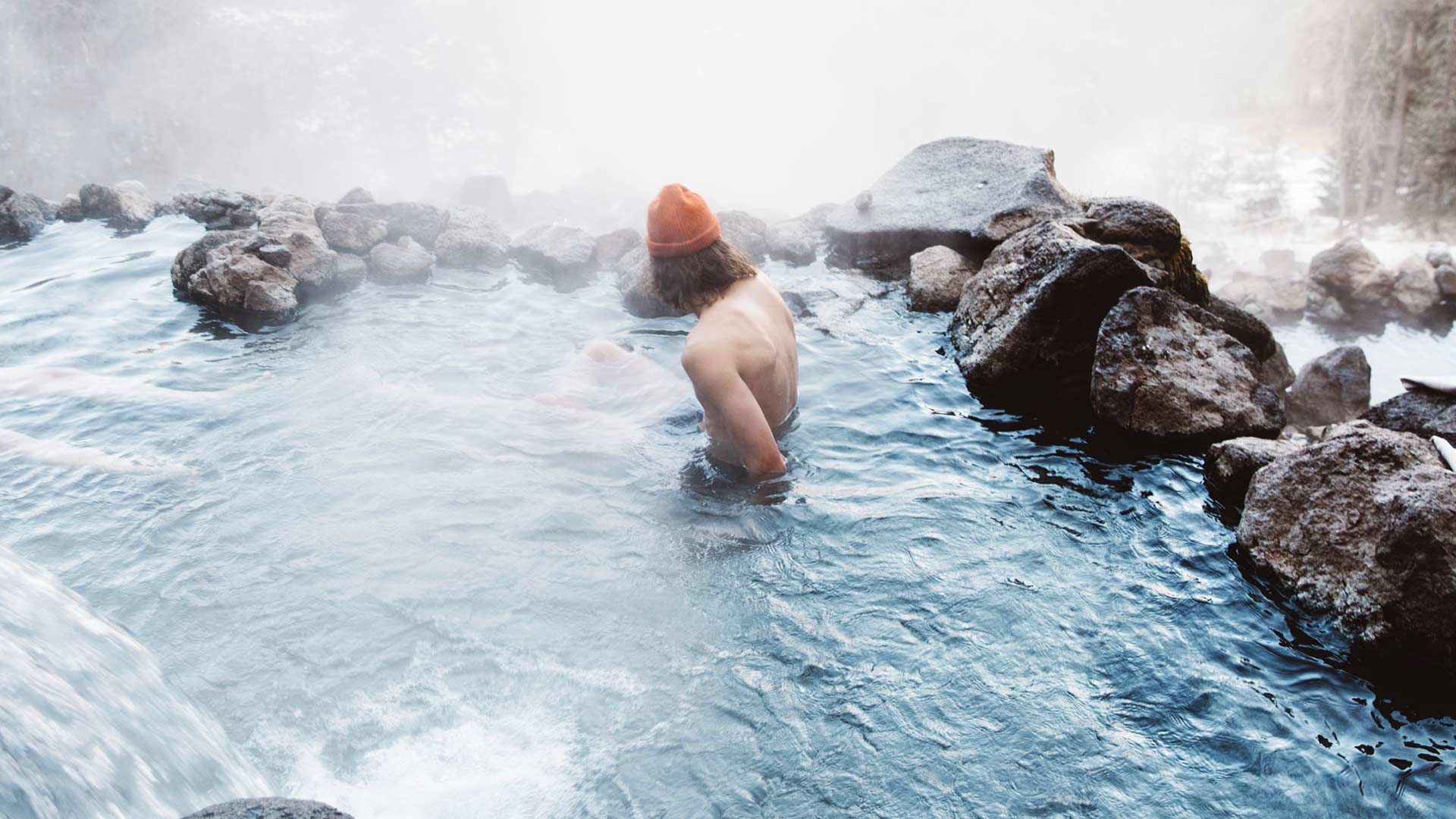
Hot Springs in Hot Summer Near Taos
New Mexico is host to some of the most unusual natural phenomenon in North America. From the White Sands to the Carlsbad Caverns, this state is unlike any other when it comes to its natural features. And we have a feeling if you’re coming through New Mexico, you’re itching for some of those experiences.
Taos and Northern New Mexico is home to a couple natural hot springs that are a must see if you want to combine outdoor adventure with a bit of found luxury. Take a look at our two favorites only a short drive from Taos.
Black Rock Hot Springs
If you like to feel like you’ve earned your leisure, Black Rock Hot Springs is right up your alley–or should we say valley. Located northwest of Taos off Arroyo Hondo, Black Rock is only a modest hike down to the Rio Grande and its complementary and complimentary hot springs.
The few small hot springs are open year-round as is the Rio Grande for swimming, although you’d prefer a dip in a spring over a river come fall. The springs, warmed by the heat under the surface, sit at around 90 degrees all year, so there’s no bad time to go. In fact, a hot spring experience in the fall and winter is regarded very highly among people who’ve done it. We’d recommend it as well.
Ojo Caliente
If you’re looking for a more upscale natural hot spring experience, Ojo Caliente to the southwest of Taos is a must-soak. These hot springs, the only in the world with sulfur free mineral water, are deemed sacred by Native Americans for their soothing body, mind and spirit qualities.
The springs are a resort experience, so hiking right up to the pools is not an option. But visitors are welcome every day for very reasonable entry tickets. The spa resort features plenty of extra services, such as massages and face treatments.
Update: Ojo Caliente Mineral Springs Resort & Spa reopened Aug. 2 at limited capacity — nearly one year after an Aug. 6, 2020, fire destroyed the Northern New Mexico resort’s historic bathhouse. Day guests won’t be able to soak at Ojo Caliente until the resort opens at full capacity, expected in late October.
There’s no better or worse option when looking for hot springs in Northern New Mexico. Both experiences are renowned in the area for their natural healing powers and relaxing environments. If you’ve come to Taos to experience New Mexico, you have to feel the hottest our land has to offer.

Go For Snow
at Bandelier National Park
Heading south to escape the winter chill? Why not embrace it one more time? Just a 90-minute drive southwest from Taos, Bandelier National Park is home to one of the most majestic scenes in the American Southwest. And if you catch it at the right time, a fresh layer of snow veiling the monument will prove to be an unforgettable experience.
Bandelier National Park is one of the proudest historical wonders New Mexico has to offer. The monument features over a mile of kivas, or cave dwellings, found and expanded upon by Pueblos as early as 1150 AD. The trail allows up-close encounters with these ancient marvels, including a small, reconstructed kiva that hikers may enter via ladder.
As beautiful and awe-inspiring as these cave-dwellings are, when snow settles on the façade of the rock and surrounding area, an other-worldly contrast of colors, history and nature make up an extraordinary scene. Along with the human achievements, the park’s own hairy-eared Abert’s squirrels come out in droves in the winter and are far easier to spot amongst the white backdrop.
There are some restrictions to the park due to COVID-19 protocols as well as the severity of snowfall. All outdoor facilities, including trails, campgrounds and park restrooms are open. The visitor center, museum and theater remain closed, however. Whether you’re on your way to El Pueblo or leaving, it’s been a generous season for snow this year and there’s still time to experience Bandelier and its kivas among the white powder.
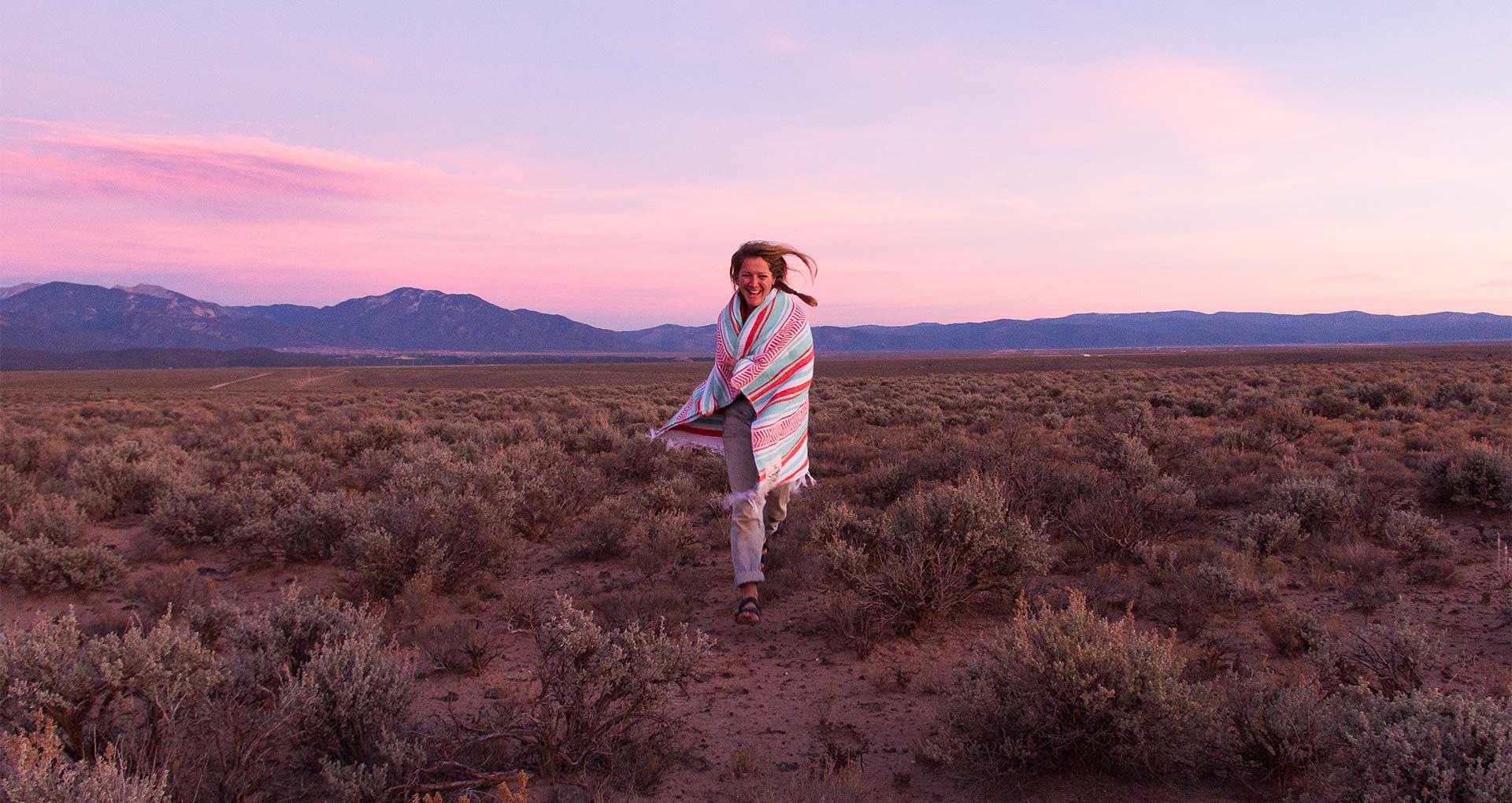
Here Comes The Sun
While sleeping in after a long day of adventures at El Pueblo Lodge, it may sound ideal, a “must-see” for any New Mexico visitor, to take in our breathtaking sunrise and sunset. Colors and shades and hues found nowhere else on Earth can be seen almost every morning and night in the American Southwest. Even our own color palette attempts to emulate these unforgettable natural tints.
While the Southwest is known for its unmatched sunsets at dusk, the sunrises fly a bit under the radar when it comes to recognition. We believe it’s because the landscapes here are so beautiful in autumn, it doesn’t matter where the sun is in the sky.
If you’re stopping through Taos on a Southwest road trip, be sure to plan your route and departure along with the sunrise. You won’t regret it. And with the threat of COVID still limiting our range of activities in Taos and New Mexico, watching the sunrise outside (or inside your vehicle) with your favorite people sounds like an unbeatable activity.
South
If you’re heading south towards Santa Fe or Albuquerque, make sure you take Route 68 down. Hovering along the edge of Picuris Peak, the growing sunlight bounces off the mountainside and splashes throughout the New Mexican landscape. Just west of Santa Fe, you’ll find the Bandelier National Monument and Santa Fe National Forest. Both natural wonders are akin to heaven in the early mornings of an autumn day in the Southwest.
Northeast
The road winding from Taos, up through Taos Canyon, across the mountain to Angel Fire, past Red River and parallel to Questa back to Taos is known as the “circle of enchantment.” Wheeler Peak, the highest in New Mexico, shines like it’s under nature’s spotlight when the sun rises each morning. Each surrounding mountain along the route has its own chance to show its true colors every autumn dawn.
Northwest
Arguably the most majestic drive in all of Northern New Mexico is the road from Taos to Chama along Route 64. Crossing over the renowned Rio Grande Gorge Bridge, through the mesmerizing Carson National Forest, around the Rocky Mountains and down the Chama Valley, you can enjoy every type of terrain as the sun begins to rise at your back, illuminating the newly gold Aspen trees and rusted valleys for hours.
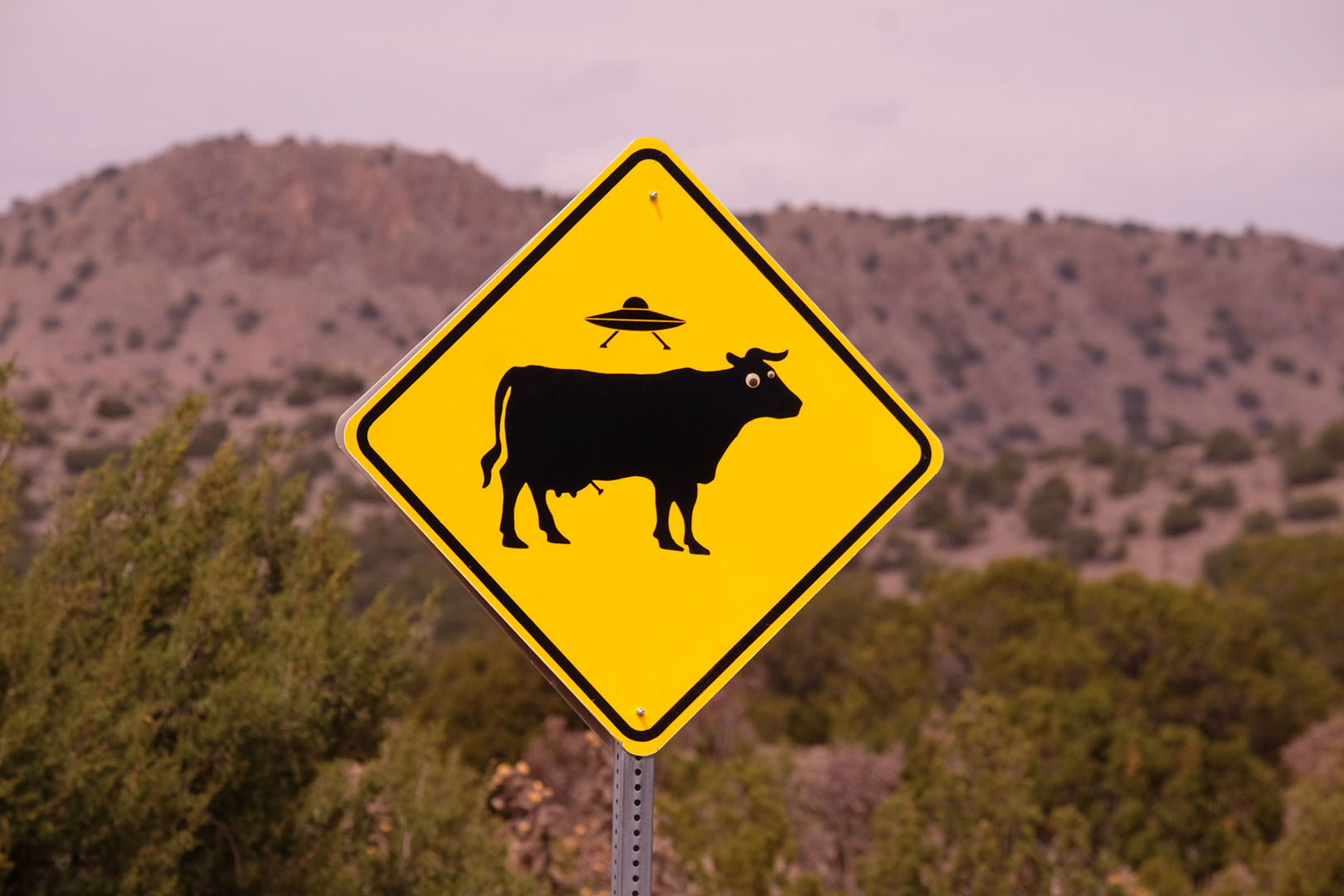
On the Road Again
Whether you’re stopping for a night or a week, chances are you’re on the road. For those of our travelers who have a destination yet to be determined, take a cue from our road trip guide around New Mexico. All of these locations are a short day trip starting at our lovely town, Taos.
Taos
Congrats, you’re here! Known for our historic adobe buildings and beautiful views with the Sangre de Cristo Mountains in the backdrop it’s hard not to fall in love with our artistic culture and adventuresome spirit. Welcome!
Sante Fe
About an hour and a half drive from Taos, and the capital of New Mexico, this town is located in the Sangre De Cristo foothills. The Georgia O’keeffe Museum is located here, featuring over 3,000 works by her. Filled with adobe landmarks all trailing back to the main Plaza, this city holds a lot of history just waiting to be explored.
Four Corners Monument
This one is a bit of a longer drive at about four hours, but how many times can you say you’ve been in four places at once? This monument not only lets it happen by being the corner to four states all at once. Stop on by to fulfill that bucket list check-off.
Albuquerque
As New Mexico’s largest city it has grown through the years and it’s only two and a half hours away. It has two distinct areas to the town contrasting one another; Old Town and the more modern Downtown. The contrast is visible from building style as well as the cityscape. Some of the fun activities to do here include the Sandia Peak Tramway which is the longest aerial tramway in the US, the Anderson Abruzzo Albuquerque International Balloon Museum and a rattlesnake museum.
Roswell
Aliens, flying saucers and artifacts, oh my! At four and a half hours away, Roswell has a namesake that everyone in the USA recognizes as the site of an alleged 1947 UFO crash. The International UFO Museum and Research Center is located here furthering the question we all wonder to ourselves; do aliens exist?
Carlsbad
A little bit longer of a drive here at about 6 hours, but definitely worth the trek. Carlsbad Caverns National Park has more than 100 caves in the Chihuahuan Desert of southern New Mexico that hold stalactites and stalagmites throughout. Great for those interested in hiking, nature and geology.
Continental Divide
Calling all hikers, bikers, horse riders and adventurers! Going straight through New Mexico, the trail follows the Continental Divide of the Americas along the Rocky Mountains. For different hiking maps and guides click here.
So with whatever stops you may choose, we hope you find the adventure you’re looking for!

Cheers to Winter
Is there anything better than a multi-day celebration of food and wine in a winter wonderland? We think not.
Every year in Taos, visitors and locals alike savor the ability to combine world-class skiing with fine wines and great cuisine. This year’s Taos Winter Wine Festival, held Jan. 31-Feb. 4 in Taos Ski Valley and around town, will feature the culinary artistry found in Taos’ top restaurants coupled with the sophistication and wines of national wineries.
The event will feature more than 40 national wineries partnering with 24 of the area’s best restaurants and include Grand and Reserve Tastings ($95 each), chefs luncheons, winery seminars and wine dinners.
The Reserve Tasting is held Jan. 31, and will boast a dozen of Taos’ best restaurants serving signature appetizers alongside tastes of reserve wines from owners and winemakers from 36 participating wineries. It also features a silent auction of wine to benefit the Taos High School Culinary Arts Program. Get, and give!
The weekend culminates with the Feb. 2 Grand Tasting, where restaurants and wineries serve samples of their best food and wine.
See a full schedule of event or purchase your tickets at taoswinterwinefest.com.
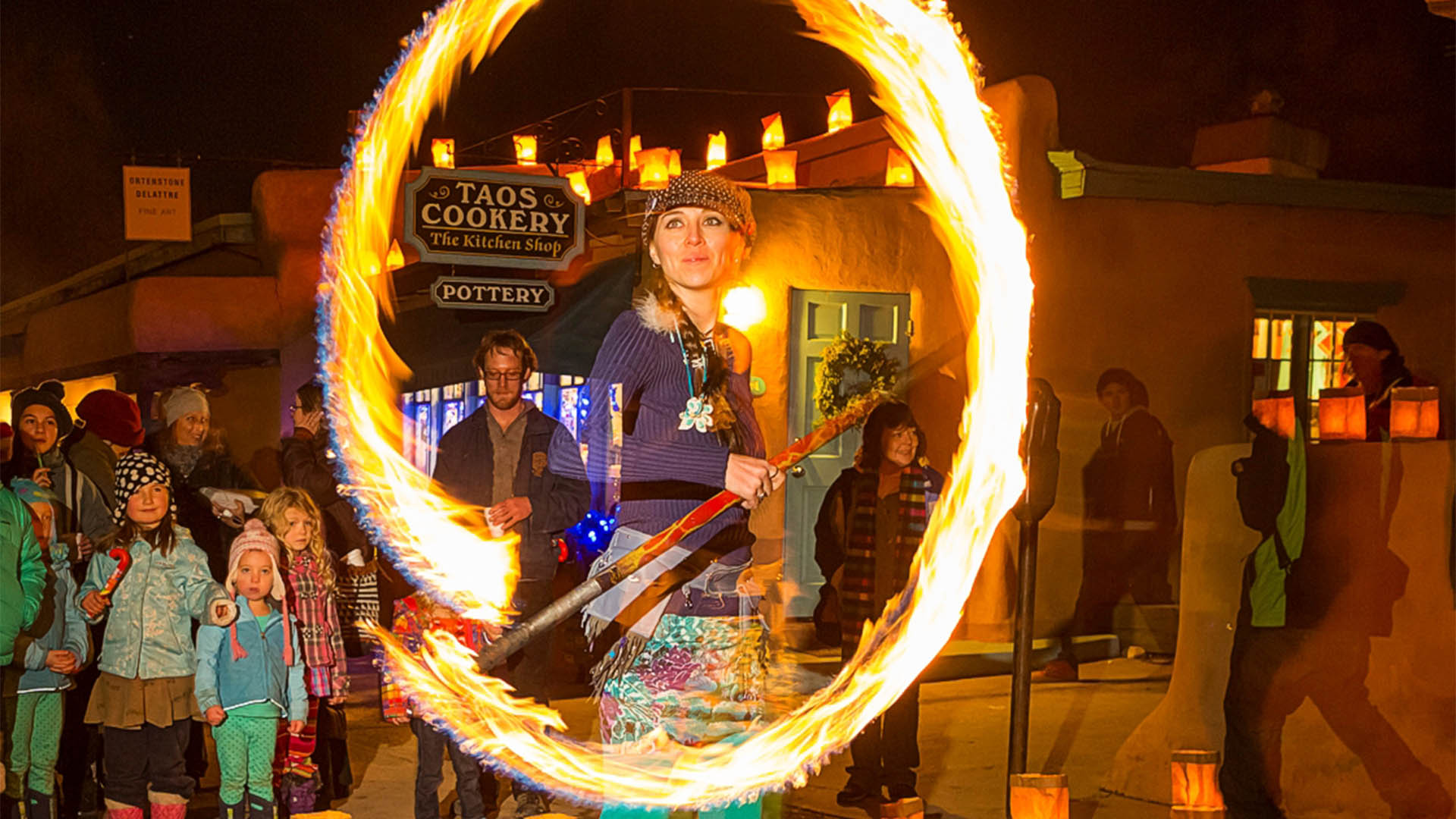
Making Magic in Taos
The holidays are here, and Taos is ready to trim the tree during Yuletide in Taos. With the falling of snow on candle-lit farolitos that line the streets in front of old adobe shops and homes, you are transported to another time and place. Here’s what’s on tap for November.
CAV Annual Yuletide Arts and Crafts Fair
Nov. 23-25, 11-4 p.m.
The Sagebrush Inn and Suites
The 35th annual Yuletide Arts & Crafts Fair features the area’s finest craftsman and artists. Shop from a variety of sculpture, paintings, foods, textiles, jewelry, pottery and more.
TAOSFOLK
Nov. 25-Dec. 24, 11-5 p.m.
Stables Gallery
Taos’ famous pop-up store returns with affordable and beautiful handmade gifts by Taos artisans.
31st Annual Yuletide Caroling and Tree Lighting
Friday, Nov 30, 4-6 p.m.
Taos Plaza
The 2018 Taos Holiday Season officially kicks off with the annual lighting of the town Christmas tree during the 31st Annual Yuletide Caroling and Tree Lighting. Come for the entertainment, and meet and greet special guests Mr. & Mrs. Claus (and even the Grinch!). Complimentary hot chocolate and cookies will be served.
Photo credit: Taos.org
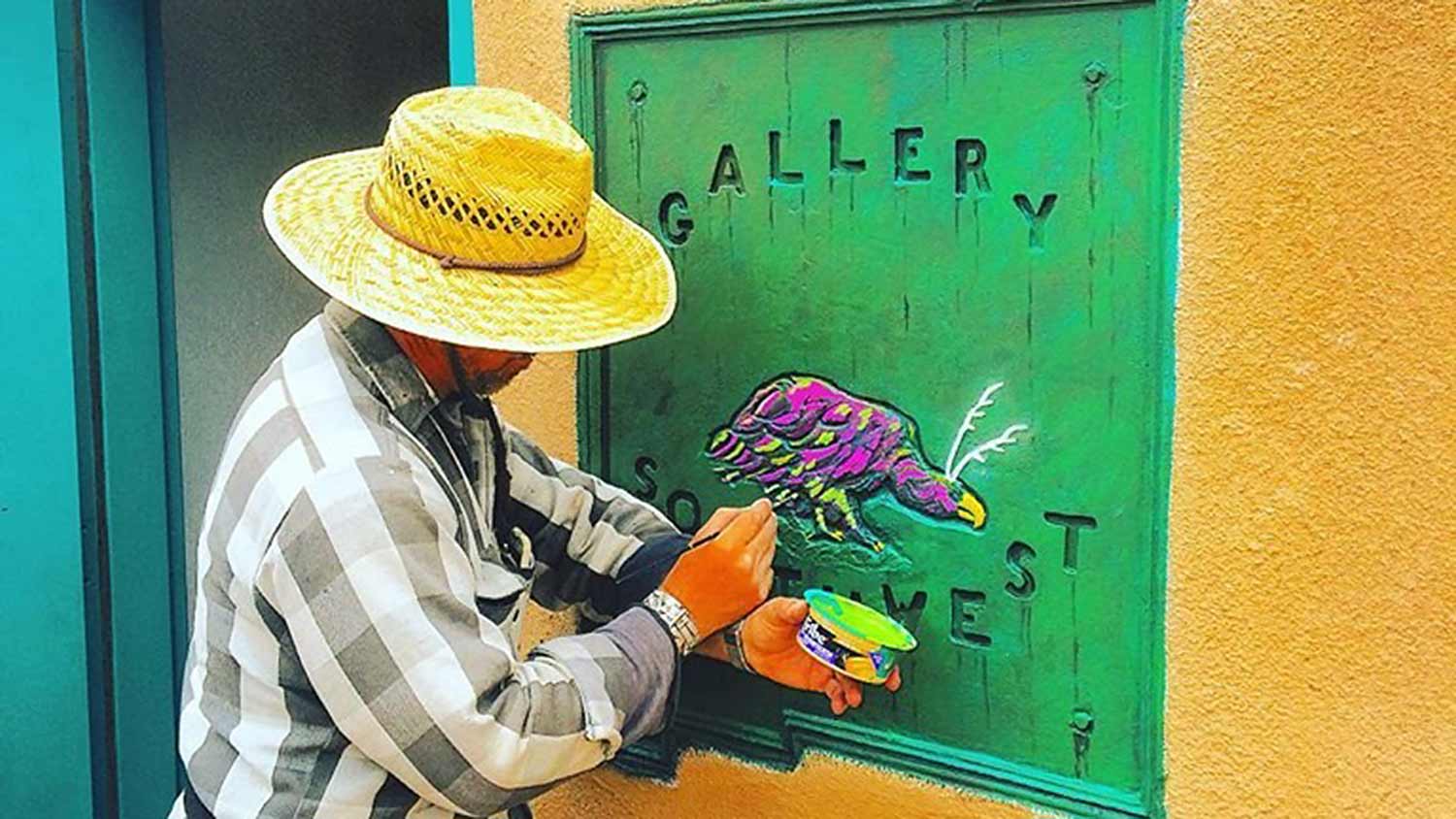
Spring Into Art
Artistry and inspiration are in the air this spring in Taos. Taos Spring Arts: Celebrating Art, Culture and Music will showcase the best of Taos’ creative community with a season of museum exhibitions, art shows, film and music festivals and more. With more than 20 events throughout the spring, there’s something for everyone!
Here are a few of our top picks for art lovers:
Mobile Museum of American Artifacts Taos Residency
Now through April 30
This traveling museum will engage the Taos community in participatory art installations and acequia-themed events that celebrate local traditions. The project’s goal is to acknowledge the culture embedded in everyday objects, illuminating their role in history and sparking community dialog, all in a museum-like setting. MMoAA activities include the capture of oral histories related to objects, including the acequia culture; lectures and community presentations around water and cultural topics; and a teen and undergraduate intern program to educate and engage our youth. The residency will conclude with a public exhibition celebrating water, acequia culture and the oral histories attached to this community treasure.
Pecha Kucha: Water is Community
Sunday, April 8, 7-9:30 p.m.
As a culmination to the weekend of “Water is Community,” Pecha Kucha Volume 26 brings a dozen community members to the stage of Taos Community Auditorium to talk water. The term “Pecha Kucha” is Japanese, and refers to the sound of “chit chat.” Presenters are given an opportunity to showcase and present 20 images of their work, with images changed every 20 seconds. There is a $10 entrance fee.
Taos Art Insurgency: The New Protagonists
April 21-May 12
The New Protagonists is a show that poses the questions: Who will be the artists that lead the way for the new millennium? And, what will be the movements and issues they champion? Taos is a major artist’s colony that has been at the forefront of all of the modern art movements initiated within the last 120 years, including Modernism, Abstract-Expressionism and Minimalism. The event will be held at Wilder Nightingale Fine Art, which is also a host of the show.

Don’t-Miss Taos Landmarks
Whether you’re looking for a history lesson, unmatched natural beauty, an environmental landmark or a religious experience, there are plenty of landmark sites in Taos to keep your itinerary full during your visit. But with so many fantastic offerings, where do you start? We’ve compiled five of our favorites to put on your “must” list. Let’s take a look:
1. Taos Pueblo: Taos Pueblo is the only living Native American community designated both a World Heritage Site by United Nations Educational, Scientific and Cultural Organization and a National Historic Landmark. These multi-storied adobe dwellings have been are considered to be the oldest continuously inhabited communities in the U.S. — and have been inhabited for more than 1,000 years.
2. Rio Grande Gorge Bridge: Rio Grande Gorge Bridge — the second highest bridge on the U.S. Highway System — is a three-span steel continuous-deck-truss structure with a concrete-filled steel-grid deck. It was called the “bridge to nowhere” while it was being built because the funding did not exist to continue the road on the other side. At 650 feet above the Rio Grande, it is the fifth highest bridge in the United States. The bridge — a great place to spot bighorn sheep — has appeared in several films, including “Natural Born Killers,” “Twins” and “Terminator Salvation.”
3. Historic Taos Plaza: The Historic Taos Plaza has been the center of local trade and community events for centuries. Today, old mercantile stores house galleries, restaurants and shops. Nearby, Kit Carson Road, Bent Street, and Ledoux Street lead to even more historic homes, neighborhoods and shopping areas.
4. Earthship Biotecture: Earthship Biotecture is a passive solar house that is made of both natural and upcycled materials, such as earth-packed tires, pioneered by architect Michael Reynolds. Reynolds wanted to create a home that would do three things: utilize sustainable architecture, materials indigenous to the local area or recycled materials wherever possible; rely on natural energy sources so it would be independent from the “grid;” and be feasible for a person with no specialized construction skills to build. Eventually, Reynolds’s vision was transformed into the U-shaped earth-filled tire homes seen today.
5. San Francisco de Asia Church: Celebrating more than 200 years, the historic “Ranchos Church” was built in the early 1800s — and is the only original church which remains intact in the Taos area. San Francisco de Asis Church continues to be an integral part of the spiritual community. In fact, every June parishioners and community volunteers gather to re-plaster the church in adobe. This annual project is called “The Enjarre,” or “the mudding” of the church.
Photo credit: Earthship Global

Wanderlust: 5 Things to try in 2018
Have you kept up your New Year’s resolutions? We don’t know about you but we find resolutions are much easier to keep when we actually want to do them! To that end, we’ve created a fun 2018 “must” list for visitors to Taos. From cultural celebrations to relaxing hot springs, there are plenty of “musts” to try all year long. What will your first adventure be?
1. Enjoy the Snowy Trail Life: Snowshoeing and cross-country skiing are both great ways to discover the natural beauty of Taos in the winter. West Rim Trail starts in the parking lot of the Rio Grande Gorge Visitor Center, and is one of the best trails for sliding and gliding is Taos. The natural landscape of the gorge is breathtaking — a perfect way to commune with mother nature in the heart of winter, or any time of year.
2. Visit a National Monument: Discover the Rio Grande del Norte public lands — proclaimed a national monument in 2013 by President Obama. The landscape is rugged, with wide-open plains, volcanic cones and steep canyons (with rivers tucked away in their depths). The unique setting of the monument provides a myriad of recreational opportunities, from whitewater rafting and fishing to hiking and mountain biking.
3. View Artistic Inspirations: A source of inspiration and muse of Georgia O’Keeffe and Ansel Adams — who were fascinated by its adobe contours and sculptural buttresses — the famous San Francisco de Asis Church continues to be an integral part of the spiritual community of New Mexico. Don’t miss the 18th century oil painting “The Shadow of the Cross,” which used to hang inside the church and now resides in the Parish Hall. When the lights went dark, the painting would mysteriously glow … now visitors can only view it in the dark.
4. Soak It Up: Located along the beautiful canyon of the Rio Grande, Black Rock Hot Springs is a unique place to visit. This small collection of hot springs was captured into one soaking pool. During the winter, and especially during spring runoff, the hot water will be completely inundated by cold river water — and impossible to locate. The pool frequently gets washed out, too, so this adventure is not without its risks. (Speaking of which, clothing is optional …).
5. Celebrate the Taos Fiestas: Taos embarks on a cultural journey July 20-22 for Las Fiestas De Taos. A celebratory tradition passed from generation to generation, the Fiestas preserve the rich tri‐cultural way of life that developed in Taos over the last four centuries. This culture is unique to Taos, encompassing pueblo and plains Indians, Spanish explorers, conquistadores, French fur trappers and American mountain men. Music, parades, food and drink, and shopping all have a place at this not-to-be-missed festive event.

The Art of the Matter
The seasons are changing from warm summer to crisp autumn, and with this change comes one of our favorite Taos fall traditions: The Taos Fall Arts Festival. From Sept. 22 to Oct. 1 the festival will feature three major art shows: The Distinguished Achievement Award Showcase, The Taos Selects (an independently juried competition featuring more than 200 works of art from Taos County artists) and the Taos Open (featuring youth art, fashion and wearable art).
Held in venues throughout the Historic District, the Taos Fall Arts Festival is the oldest arts festival in Taos, celebrating its 43rd year in 2017. The festival showcases emerging and established artists within Taos County, and represents more than 250 Taos County artists of all mediums annually. Over the years, other art events have set their dates to coincide with the festival, which was founded in 1973 by a group of artists and gallerists. The season, known as “Grand Fall Arts,” is the largest arts event in northern New Mexico.
This year, several distinct art shows will be held at six locations along with a walking tour through Taos’ central core. The 2017 Fall Arts Festival will include both recognition for Best in Show and an award for a Local Emerging Artist. In addition, the Taos Environmental Film Festival will kick off Sept. 29, and incorporate films honoring the land, environment and people of New Mexico. This year’s Official 2017 poster, “Colors of Northern New Mexico,” was designed by local artist Ed Sandoval, and is a stunning rendition of the area near his birth place in Nambe, N.M. Get yours at http://www.taosfallarts.com/buy-posters.html.
Learn more about the Taos Fall Arts Festival at www.taosfallarts.com.
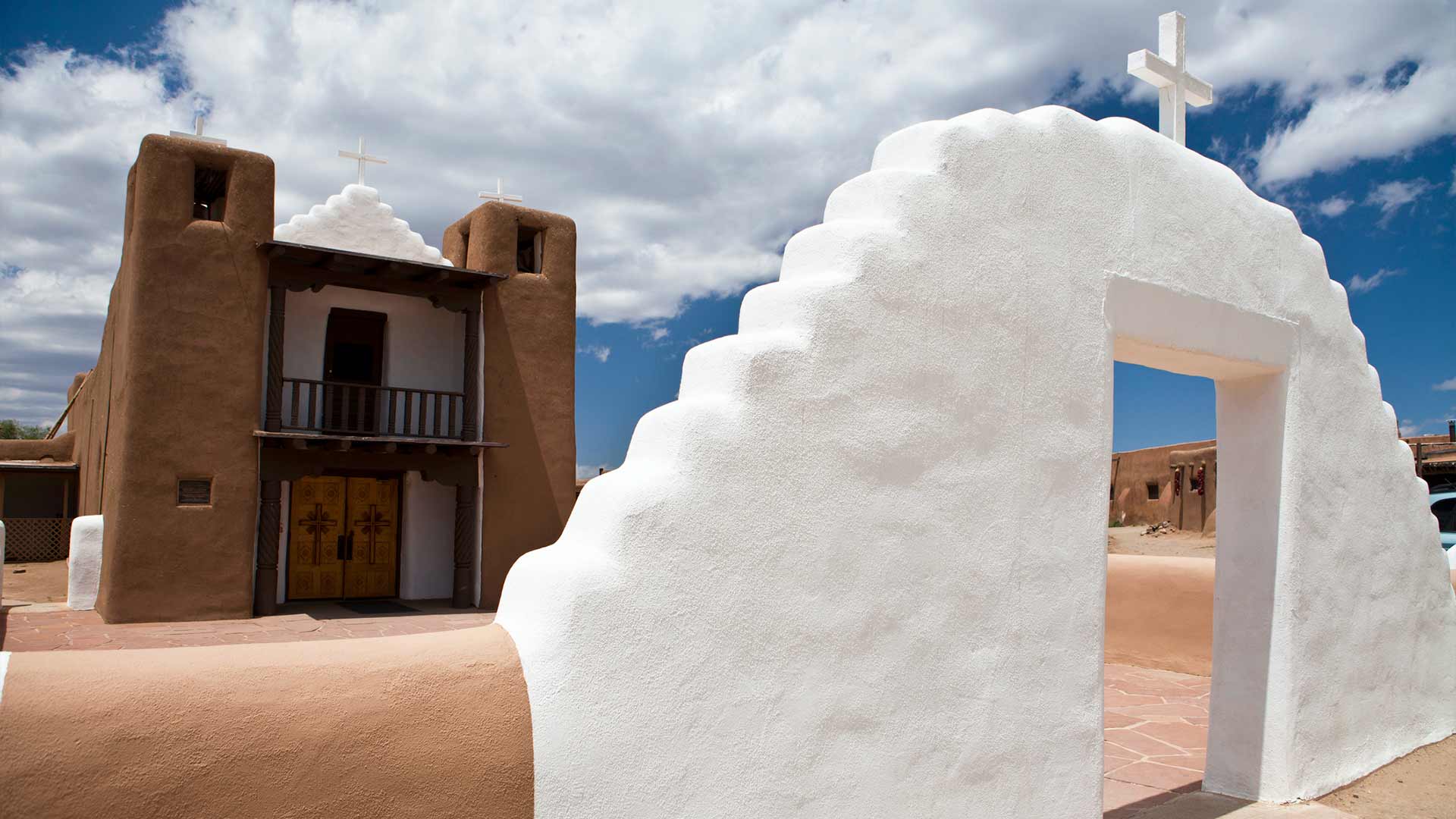
Bringing History to Life
Native culture is alive and well in Taos, and inhabitants and visitors alike celebrate that unique and rich tradition everyday through a plethora of arts, culture and music events. There are eight northern pueblos that are open-to-the-public, where visitors can learn how Taos’ native communities’ pottery, jewelry, dancing and food influenced the art and culture of the Southwest.
1. Taos Pueblo: Taos Pueblo (“The Place of the Red Willows”) is the only living Native American community designated both a World Heritage Site by UNESCO and a National Historic Landmark. The multi-story adobe buildings have been continuously inhabited for more than 1,000 years. Archaeologists say ancestors of the Taos Indians lived in this valley long before Columbus discovered America and hundreds of years before Europe emerged from the Dark Ages. Ancient ruins in the Taos Valley indicate those native to the region lived there nearly 1,000 years ago. The main part of the present buildings were most likely constructed between 1000 and 1450 A.D., and appeared much as they do today when the first Spanish explorers arrived in Northern New Mexico in 1540.
2. Picuris Pueblo: Named Pikuria (“Those Who Paint”) by Spanish colonizer Juan de Oñate, Picuris is located about 20 miles southeast of Taos in the Sangre de Cristo Mountains. Although it was once the largest, today Picuris is one of the smallest Tiwa pueblos, with less than 2,000 inhabitants. Like Taos, it was influenced by Plains Indian culture, particularly the Apaches. Picuris Pueblo is open 8 a.m. to 5 p.m. Monday-Friday.
3. More to Visit: There are eight pueblos you can visit today in northern New Mexico, each with its own unique traditions and culture. In addition to Taos Pueblo and Picuris Pueblo, Nambé Pueblo (“Mound of Earth in the Corner”), Ohkay Owingeh (“Village of the Strong People”), Pojoaque Pueblo (“Water Drinking Place”), San Ildefonso Pueblo (“Where the Water Cuts Through”), Santa Clara Pueblo (“Valley of the Wild Roses”) and Tesuque Pueblo (“Cottonwood Tree Place”) each provide a unique footprint of Native American culture.
Learn more about the rich history of the region during your next trip to Taos. And remember: Before you visit, research the rules of each pueblo, such as photography and areas of the pueblo that are accessible to the public. Individual websites for each pueblo will give you the 411 on these Southwestern treasures.
